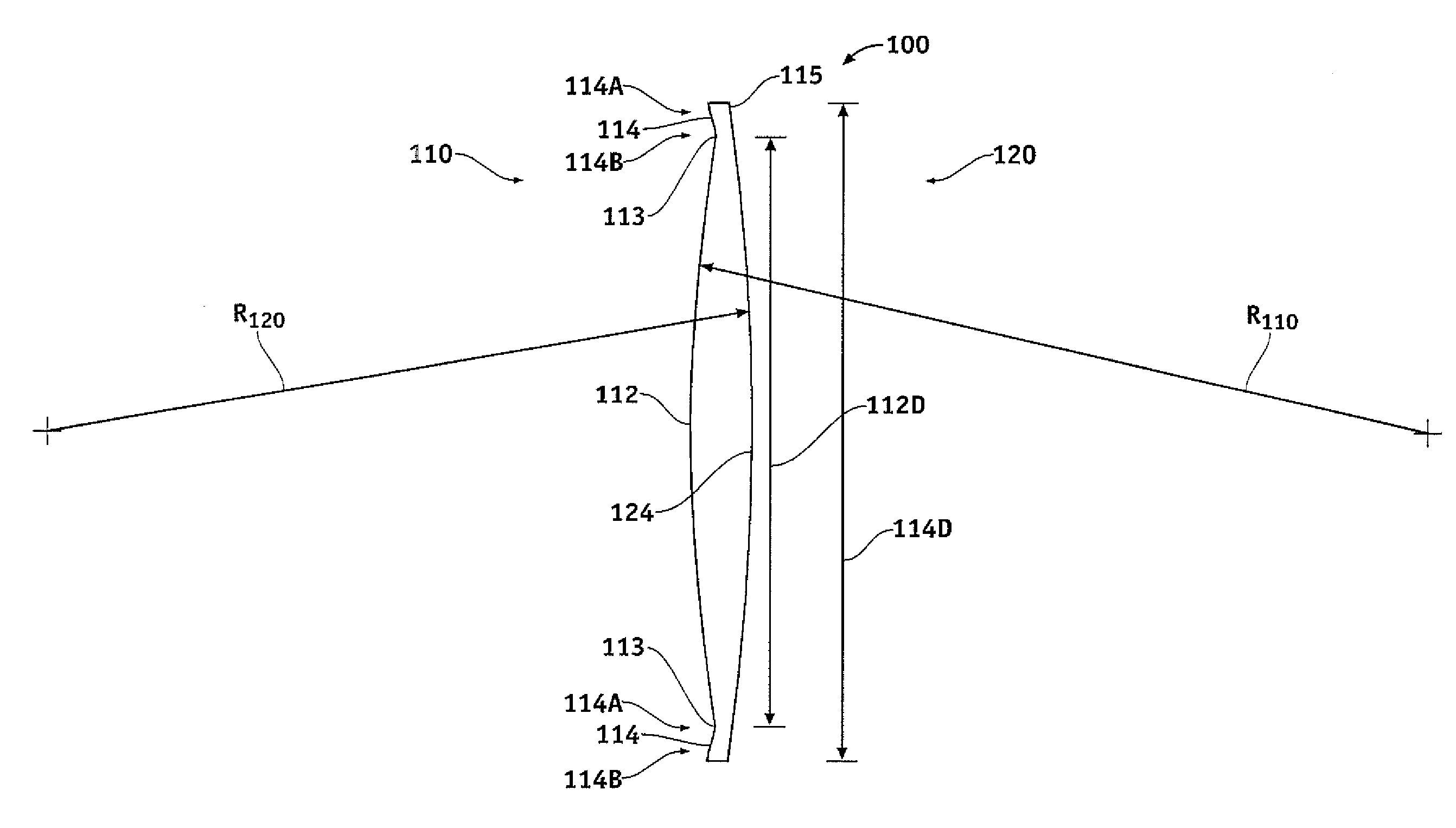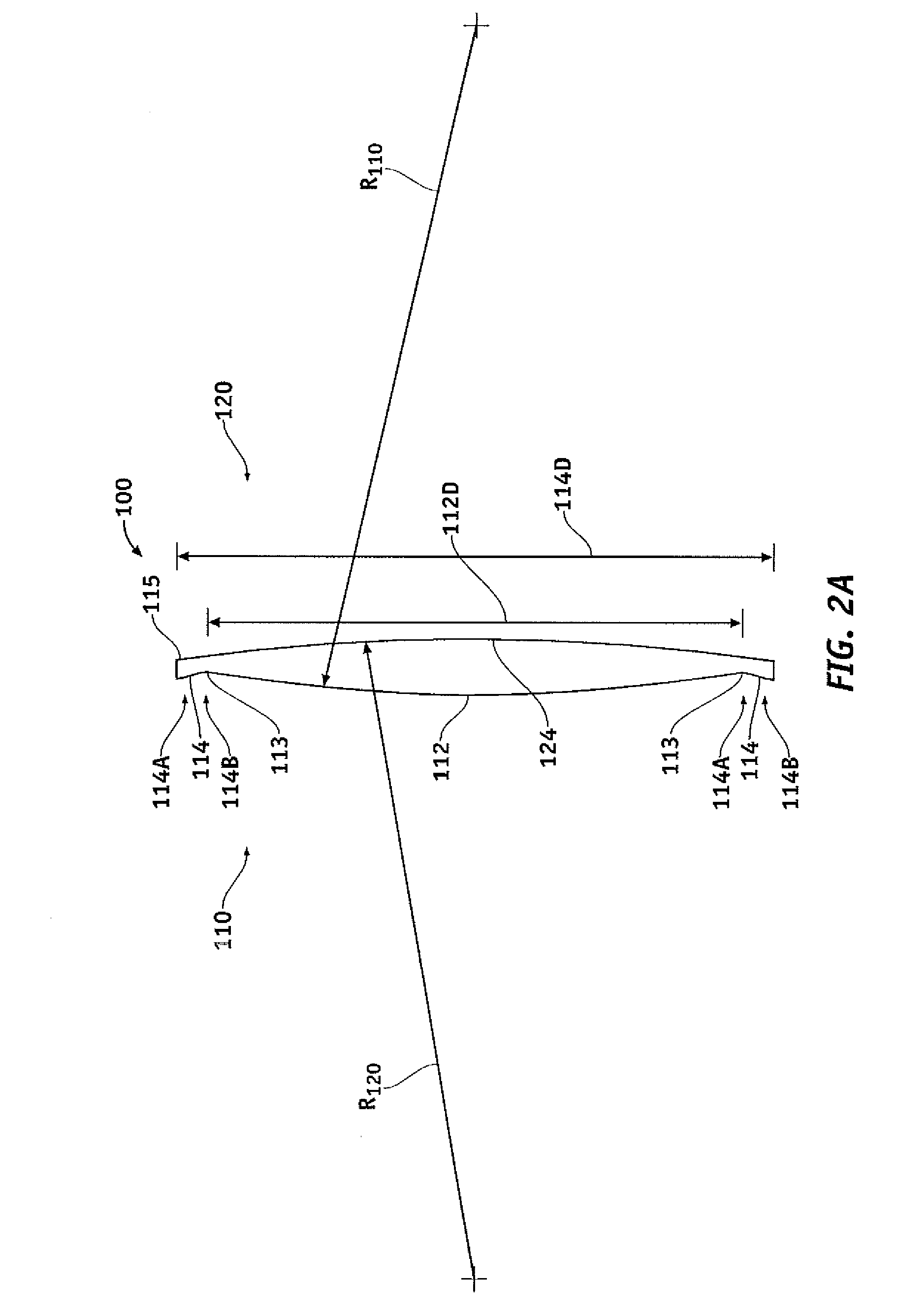Microincision lens
- Summary
- Abstract
- Description
- Claims
- Application Information
AI Technical Summary
Benefits of technology
Problems solved by technology
Method used
Image
Examples
example 1
Optical Surface Parameters for the First Side 110 and Second Side 120
[0058]Tables 1A to 1E show optical surface parameters of the first side 110 and the second side 120 in accordance with embodiments.
[0059]Table 1A shows optical surface parameters of the first side and the second side. The optical power of the lens can be determined with the Thin Lens Equation
D=(n−1) / R
where D is the dioptric power, n is index of refraction and R is the radius of curvature. For an example 20D biconvex foldable lens 100, the radius of curvature R110 of the first side may comprise about 13.4 mm, and the radius of curvature 120 of the second side may comprise about 13.4 mm, and the center thickness about 0.49 mm. The corresponding radius of curvature of the aqueous humor in contact with the foldable lens can be set to −13.4 mm, for example, in accordance with the aqueous humor liquid of the eye in contact with the lens. Alternatively, the first side may comprise an optical power of about 20 D and the s...
PUM
 Login to View More
Login to View More Abstract
Description
Claims
Application Information
 Login to View More
Login to View More - R&D
- Intellectual Property
- Life Sciences
- Materials
- Tech Scout
- Unparalleled Data Quality
- Higher Quality Content
- 60% Fewer Hallucinations
Browse by: Latest US Patents, China's latest patents, Technical Efficacy Thesaurus, Application Domain, Technology Topic, Popular Technical Reports.
© 2025 PatSnap. All rights reserved.Legal|Privacy policy|Modern Slavery Act Transparency Statement|Sitemap|About US| Contact US: help@patsnap.com



